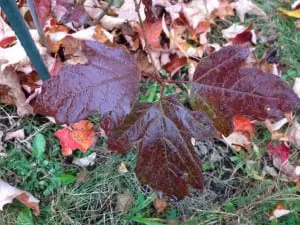Cats are a huge threat to bird population
By Pamela Doan
A reader asked: “We have several bird feeders hanging from the posts on our patio. We’ve had a problem with cats hiding under the deck and in the large evergreen bushes below and catching birds. We recently had the deck rebuilt and took out the bushes. What can we plant that will be safer for the birds? We’ve also seen opossums and raccoons around that are attracted to the free food and we’d like to keep them away, too.”
Cats are a huge threat to bird populations, and it’s good that you’re concerned. Cats kill millions of birds every year. If the cat in question is your pet, consider keeping it indoors or putting a bell on its collar to reduce its stealth factor. Some cats are feral or belong to a neighbor, though, and you can’t keep them out of your yard.
You need to address the structural barriers as well as the landscaping issues. Whether the seed spills out of the feeder and onto the ground or the patio deck doesn’t matter; birds will follow it and make easy targets for animals, and both areas need to be safeguarded. Raccoons and opossums will prey on birds, too, but they are probably mainly coming for the easy meal and returning because it’s always there.
Install a screen around the underside of the patio using lattice or wire to keep the critters from hiding under there as a first step. That will help discourage all of them from hanging out if they don’t have a place to hide. Additionally, wrap a 2-foot-wide band of metal around any nesting trees to prevent them from climbing the tree and disturbing nests.
Bird feeders should be placed on 5- to 6-foot poles away from trees and other areas that give easy access to animals, including squirrels. Raccoons are fantastic climbers and determined hunters. Metal baffles deter some animals, but placement of the pole is key.

As far as plant choices, look for natives that complement your desire to feed birds by providing a natural food source and other needs too, like offering nesting areas or attracting insects that birds will eat. I referenced The Audubon Society Guide to Attracting Birds by Stephen W. Kress for some of these suggestions, and you can take a look at the book for further reading.
Ilex glabra or inkberry is a holly that is suitable for a foundation-type planting and can be pruned to keep it in check. Its height reaches 6 to 10 feet at maturity, and nearly a dozen species of birds love the black berries it has in winter. It’s a dense shrub and many birds will nest in it as well, although maybe not if it’s so close to the house.
Viburnum trilobum or cranberry bush is an attractive native shrub with colorful leaves in the fall and a winter food source of berries. Twenty-nine species of birds are known to enjoy its fruit. Other types of viburnum will feed birds, but not as many species eat the berries as this one.
Groundcovers like Juniperus horizontalis or creeping juniper and Vaccinium vitis-idaea or cowberry have berries and won’t be an easy hiding place for a cat or raccoon. Arctostaphylos uva-ursi or bearberry has red berries in the summer and fall that more than 30 bird species use as a food source.
Growing vines on the lattice underneath the patio will hide the screen but could be problematic if you don’t want anything growing on the deck boards. It depends on how your deck is built. Ampelopsis cordata or heartleaf is preferred by at least 10 bird species, including flickers.
Sunflowers are easy to grow and a joy to have in the landscape. There are many cultivars and you can find them in various colors and heights. You could cultivate a sunflower garden around your patio that would make a fall food source for birds. If you leave the heads on the flowers, birds will eat the seeds directly from the stalk of the plant. Or cut off the heads and save them for winter. Then tie the head onto the patio pole and let the birds have a cold-weather snack, or remove the seeds from the dried flower and add them to a feeder.
The sunflower garden gives you a lot of choices with color variety, and it can be planted in such a way as to discourage the uninvited predators from hanging around. Sunflowers are simple to plant, too, and don’t require a lot of ground preparation; they’ll grow just about anywhere. Whatever you decide, please send some photos to show how it turns out.

